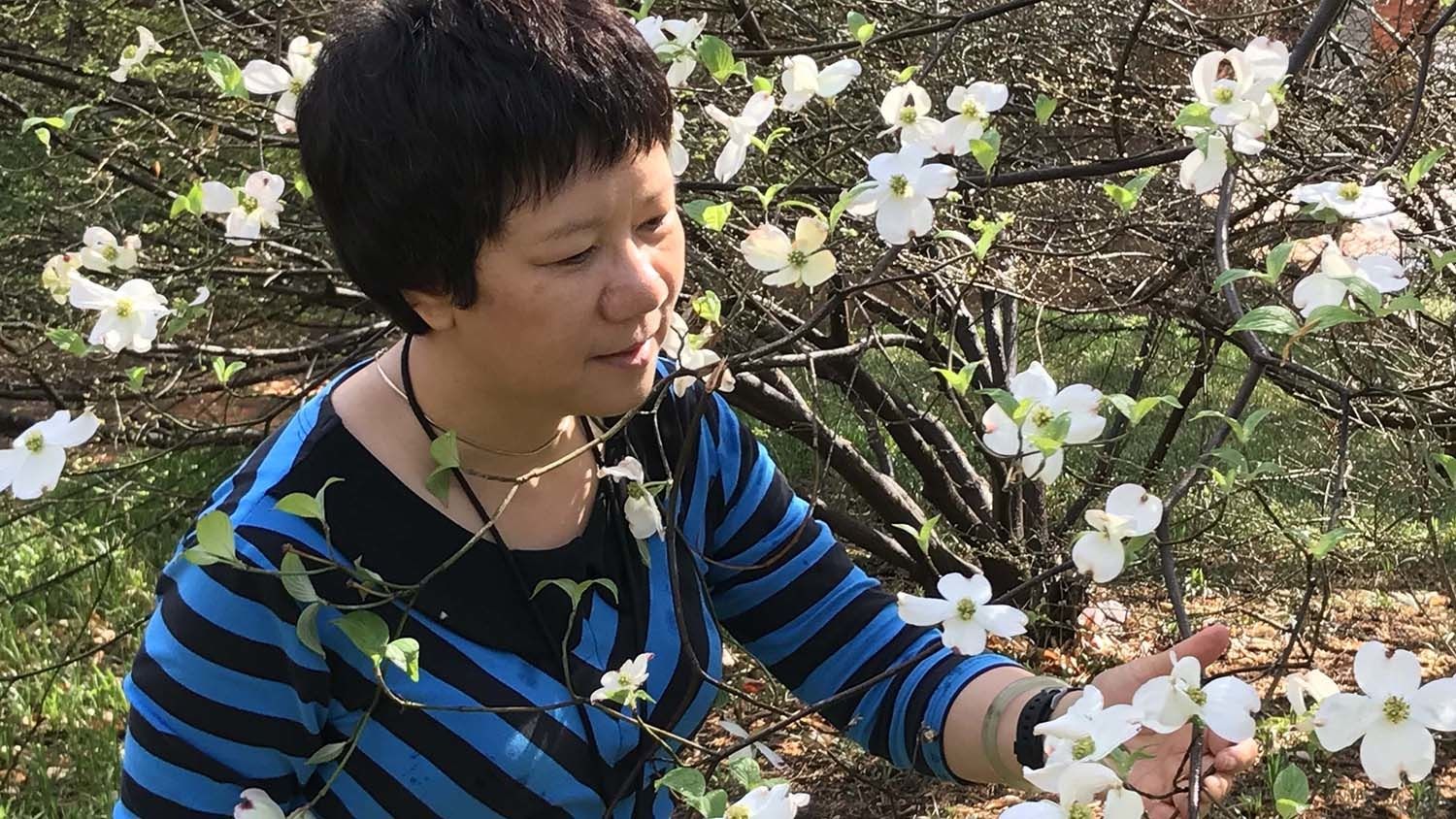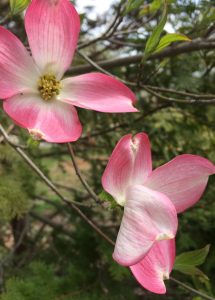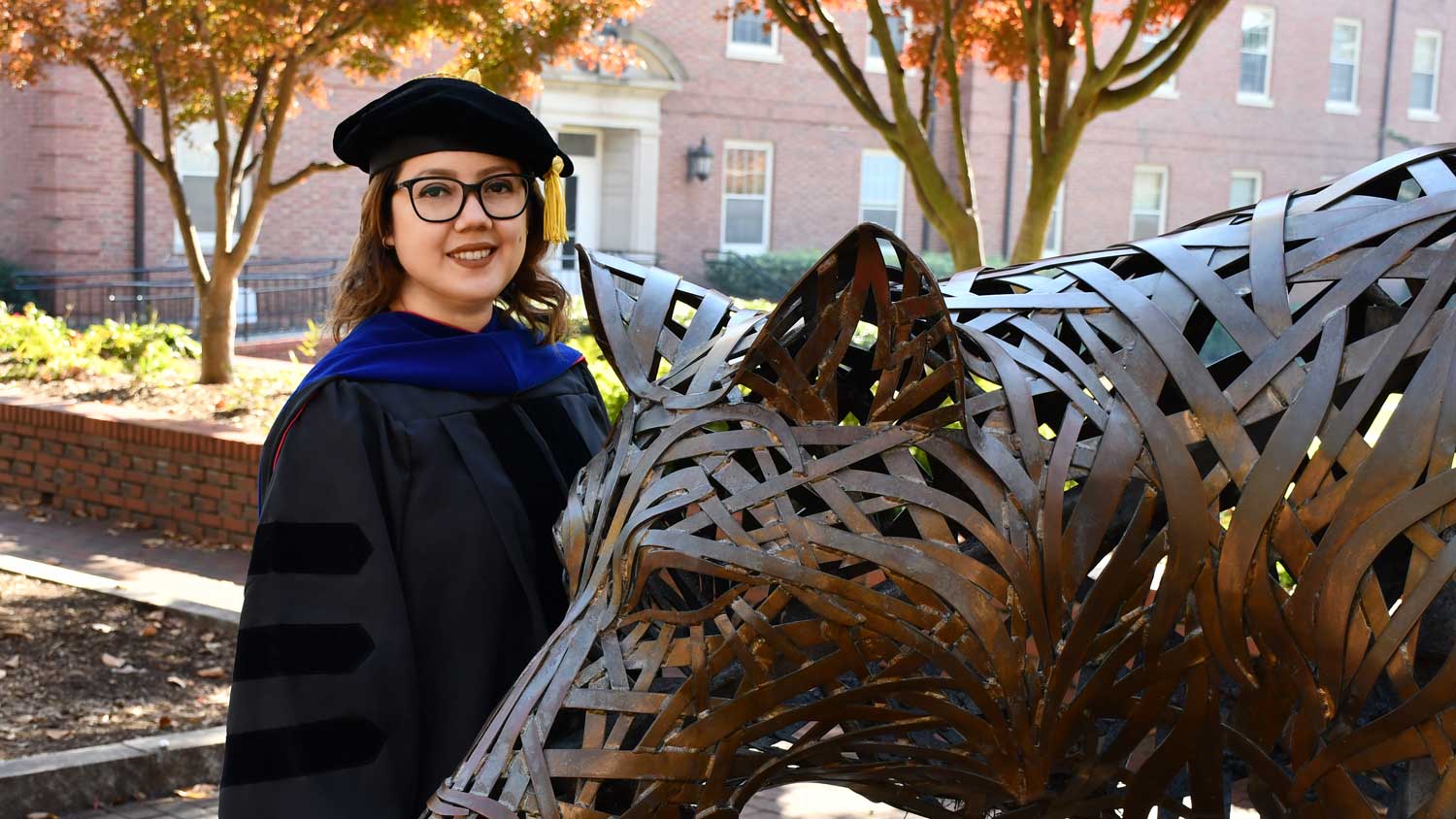Xiang Explores the Evolutionary History of Dogwood Diversity

Plant scientists have long noted the striking similarities between forests of China and Japan and those of eastern North America. NC State University’s Qiu-Yun “Jenny” Xiang is helping shed light not only on the origin of this distribution pattern but also on the amazing diversity of flower display within a genus common to both areas.
Xiang, of the Department of Plant and Microbial Biology, studies the flowering plants that make up the dogwood genus, formally known as Cornus. The genus includes not only the deciduous tree that gives North Carolina its distinctive state flower but also perennial herbs that grow in colder climates and even several evergreen trees.
The genus, Xiang said, provides “a nice system” for studying both the evolution of floral display and the formation of what’s called the eastern Asian-eastern North American floristic disjunction.
Xiang works in the field of plant systematics, using the tools of modern genomic sciences to understand the relationship between evolutionary history, morphology and genetics.
Last year, Xiang and collaborators at NC State and Zhejiang University in China proposed a new model for explaining how changes in expression of certain genes over space and time are responsible for the dramatic variation in flower display within Cornus.
It turns out that what we call a dogwood flower isn’t a flower at all – it’s multiple flowers in an arrangement known as inflorescence. Scientists characterize inflorescences as either closed or open, depending on whether the tip of the shoot supporting the flowers ends in a terminal flower or if it continues to sprout vegetative buds.
In Cornus, each species has a closed inflorescence, but the structures otherwise look as diverse as the sound of the names that scientists have ascribed to them — heads, umbels, double minute dichasia and paniculate cymes.
While earlier experiments by other scientists had shown that three genes are key to inflorescence development in model plants, Xiang and her team were the first to use a combination of quantitative real-time polymerase chain reaction, RNA in situ hybridizations and genetic modification to learn more about how the variation of inflorescence architecture had evolved in the dogwood genus.
In a more recently published study, Xiang focused not only on the question of how the dogwoods changed over time but also on when those changes occurred. Comparing the transcriptomes, or sets of all messenger RNA molecules, of eight dogwood species, she and others showed that a common whole genome duplication event occurred in the common ancestor of all in the late Cretaceous period – a little before the time that dinosaurs disappeared.
Such an event, which coincided with Cornus’ divergence into three major lineages and an increase of the sea surface temperature, is consistent with an earlier hypothesis that past environmental stress might have promoted genome doubling in plants and prompted their diversification, she said.
Currently, Xiang is collaborating with other leading scientists in plant systematics, ecology and microbiome diversity to better understand the time of origin and the migration of plant groups shared between eastern Asia and eastern North America. The dogwood family is one of the plant groups they are studying.
“This research will help us understand how common history, local evolution and ecological processes have shaped the assembly of forest communities in the two widely isolated geographic regions,” she said. The project, supported by national science foundations in the United States and China, involves NC State, the University of Florida, University of Chicago, Zhejiang University of China and the Chinese Academy of Sciences.

While Xiang’s research focuses on basic evolutionary questions, it also has practical implications. Dogwood species are popular ornamental plants cultivated worldwide, she noted, and her research provides insights for those involved in breeding these species and those who play a role in natural resource conservation.
For example, one of her students, Andrew Pais, recently discovered genetic and metabolite markers associated with a disease, dogwood anthracnose, which has ravaged dogwoods of the popular Cornus florida species in the Appalachian Mountains and northern region of eastern North America.
Xiang was also on the first team to be able to genetically transform a dogwood. The transformation protocol she and her colleagues developed for the bunchberry, or Cornus canadensis, paves the way for further study of the genetics of woody dogwoods and for genetic modification to generate novel varieties, she explained.
Xiang and her colleagues have modified the bunchberry genetically so that it better tolerates heat. “The heat-tolerant bunchberry could be a new cultivar that can grow in North Carolina, outside its native region in the north,” she said.
Xiang’s career in answering questions related to dogwoods stretches back 30 years, to her first job with the Institute of Botany, the Chinese Academy of Sciences, in Beijing.
“My adviser proposed that I should start working on the dogwoods group because there was a great controversy in the classification of the group, a great diversity in inflorescences, and an interesting discontinuous geographical distribution,” she said. “Now, more than 30 years later, I still find there are an immense number of questions to answer – more than I will be able to answer in my career.”
This post was originally published in College of Agriculture and Life Sciences News.
- Categories:


